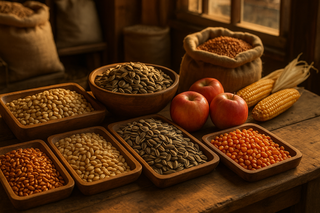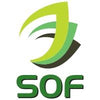Spirulina – The Superfood from SK Organic Farms
Spirulina is a blue-green micro-algae known as one of nature’s oldest and most nutrient-dense superfoods, dating back over 3 billion years. This powerhouse contains 60-70% complete protein, providing all eight essential amino acids your body needs.
Low in fat but rich in vital essential fatty acids, spirulina is especially high in Gamma Linolenic Acid (GLA) — a hormone precursor that supports healthy heart function and circulation. GLA also has anti-inflammatory properties, benefiting skin and hair health.
Our Spirulina Journey
In early 2012, SK Organic Farms partnered with Dr. Babu (Ph.D. in Seaweed from Madras University) and founder Prakash Kannaiyan to establish Simplicity, a dedicated spirulina farming initiative at our Ambur farm. Together, they conducted extensive research and laboratory-scale experiments to optimize spirulina production and quality.
Spirulina Plant Setup
View Our Spirulina Products




Here’s a polished, website-ready version of your Spirulina product description, crafted for clarity, flow, and engagement — perfect for your SK Organic Farms site or product page:
Organic Spirulina from SK Organic Farms
At SK Organic Farms, we produce one of the finest organic spirulina powders using a simple, natural process that stays close to nature. Our raw spirulina powder is sold competitively on the eBay marketplace, reaching customers across India. Proudly, we are among the best-selling spirulina suppliers on eBay and within the Indian market.
Nutritional Powerhouse
Spirulina is packed with essential vitamins such as the full B-complex range, Vitamin E, and beta-carotene. It is especially rich in Vitamin B12, making it an excellent source for vegetarians, similar to Klamath Blue Green Algae.
Minerals like iron, calcium, zinc, potassium, magnesium, selenium, phosphorus, and trace elements are abundant, with spirulina’s iron being highly bioavailable. It also contains vital enzymes, chlorophyll, DNA, RNA, sulfolipids, and glycolipids that contribute to overall health.
Health Benefits
Spirulina supports the immune system, stimulates new blood cell production, and offers disease-preventing properties. Its characteristic dark blue-green color comes from powerful pigments like Phycocyanin (15-18%), a known blood builder with anti-viral and anti-cancer properties. Other pigments include high levels of chlorophyll (green) and carotenoids like beta-carotene (orange/yellow). Our spirulina’s low pheophorbide content makes it exceptionally vibrant and green.
Easy to Digest & Nutrient-Rich
The cell wall of spirulina is composed of soft mucopolysaccharides instead of cellulose, making it highly digestible and ideal for those with sensitive digestion. Its high protein content (60-70%) provides real nourishment, while being low in fat, sugar, and calories. This makes spirulina popular with health-conscious consumers and dieters seeking sustained energy and nutritional satisfaction.
Scientific Insight
C-Phycocyanin, the key pigment in spirulina, has an alpha-beta (αβ) molecular structure found in trimers and hexomers, contributing to its unique properties. Early research focused on spirulina’s protein, vitamins, essential fatty acids (including γ-linolenic acid or GLA), and minerals, highlighting its potential as a health supplement.
Recognized as the “food of the future,” spirulina was even considered by NASA as an ideal food for astronauts due to its dense nutrition.
Why Choose SK Organic Farms Spirulina?
-
Certified organic and naturally processed
-
Competitive pricing on eBay with wide India-wide reach
-
High purity with rich pigment and nutrient content
-
Easy to digest and rich in complete protein and essential nutrients
Experience the superfood that has sustained life for billions of years — Power your health naturally with SK Organic Farms Spirulina.





